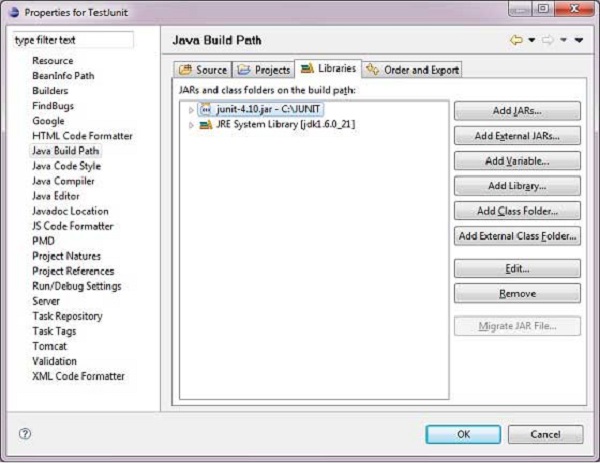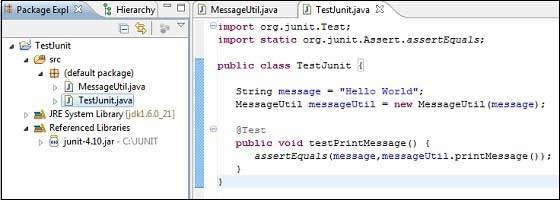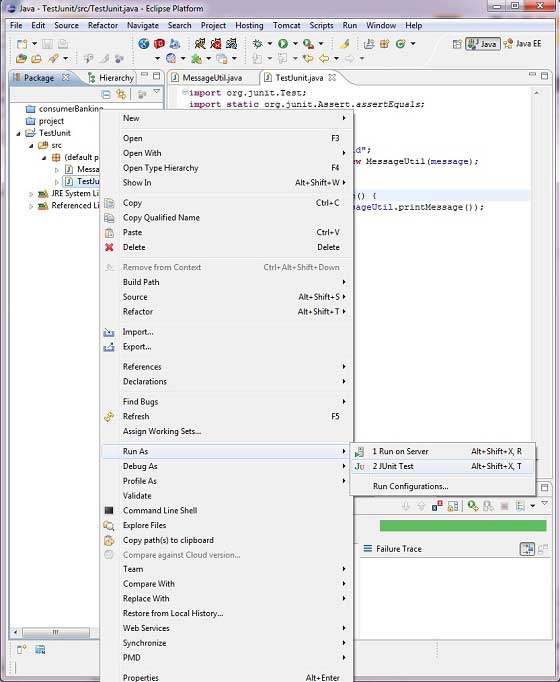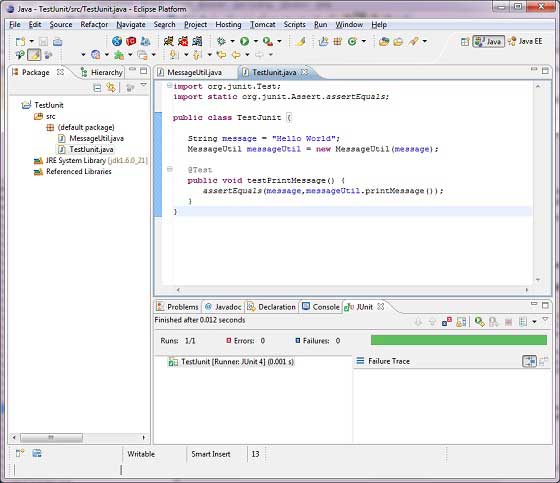JUnit - Plug with Eclipse
To set up JUnit with eclipse, follow the steps given below.
Step 1: Download JUnit Archive
Download a JUnit jar based on the operating system you have on your system.
| OS | Archive Name |
|---|---|
| Windows | junit4.10.jar |
| Linux | junit4.10.jar |
| Mac | junit4.10.jar |
Assume you have copied the above JAR file onto the folder C:\>JUnit.
Step 2: Set Eclipse Environment
Open eclipse → right click on project and click on property > Build Path > Configure Build Path and add the junit-4.10.jar in the libraries using the button Add External Jar.

We assume that your Eclipse has inbuilt JUnit plugin. If it is not available in C:\>eclipse\plugins directory, then you can download it from JUnit Plugin. Unzip the downloaded zip file in the plugin folder of the Eclipse. Finally restart Eclipse.
Now your Eclipse is ready for the development of JUnit test cases.
Step 3: Verify JUnit installation in Eclipse
Create a project TestJunit in Eclipse at any location. Then create a class MessageUtil to test in the project.
/*
* This class prints the given message on console.
*/
public class MessageUtil {
private String message;
//Constructor
//@param message to be printed
public MessageUtil(String message){
this.message = message;
}
// prints the message
public String printMessage(){
System.out.println(message);
return message;
}
}
Create a test class TestJunit in the project.
import org.junit.Test;
import static org.junit.Assert.assertEquals;
public class TestJunit {
String message = "Hello World";
MessageUtil messageUtil = new MessageUtil(message);
@Test
public void testPrintMessage() {
assertEquals(message,messageUtil.printMessage());
}
}
Following should be the project structure −

Finally, right click the program and run as JUnit to verify the output of the program.

Verify the result.




